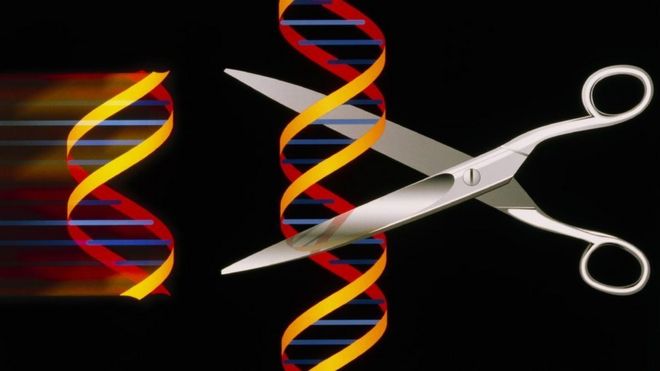 Scientists have used a gene-editing tool to stunt tumour growth in mice.
Scientists have used a gene-editing tool to stunt tumour growth in mice.
Crispr-Cas9 replaces harmful DNA with new code that kills cancerous cells while leaving healthy ones unharmed.
Mice with the reprogrammed code developed tumours that were much smaller than cancers in mice that did not get this treatment.
Experts call the study, in Nature Methods, promising but say it is unclear yet whether the technique would work in humans.
Dr Weiren Huang, from the First Affiliated Hospital of Shenzhen University, in China, and colleagues used Crispr-Cas9 to reprogram a cell-signalling pathway that would normally feed tumour growth in mice.
Gene editing
Crispr-Cas9 is a DNA cutting and pasting system scientists have borrowed from nature.
Bacteria use it to protect themselves against foreign DNA from viruses.
Scientists have already begun using it in the lab to target and cut out faulty DNA in human cells that cause illnesses.
But it is not without risks.
While effective, the editing process is less than perfect and can cut out too much DNA.
These unwanted or "off-target" edits could alter other important genes, inadvertently triggering cancer, for example.
Dr Chris Lord, a gene expert at the Institute of Cancer Research, said: ""The key to translating this technique into the clinic will be to see how specific to the tumour cell the Crispr activation will be and how specific, in terms of genes, the Crispr-mediated gene cutting will be.
"These are essentially the same two issues you have with all cancer treatments - how specific for the tumour cell and how specific for the target."
BBC Health News